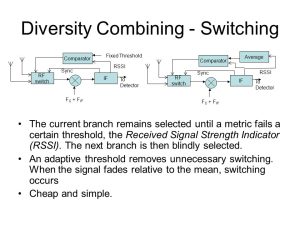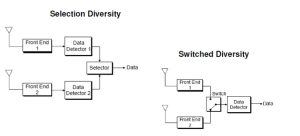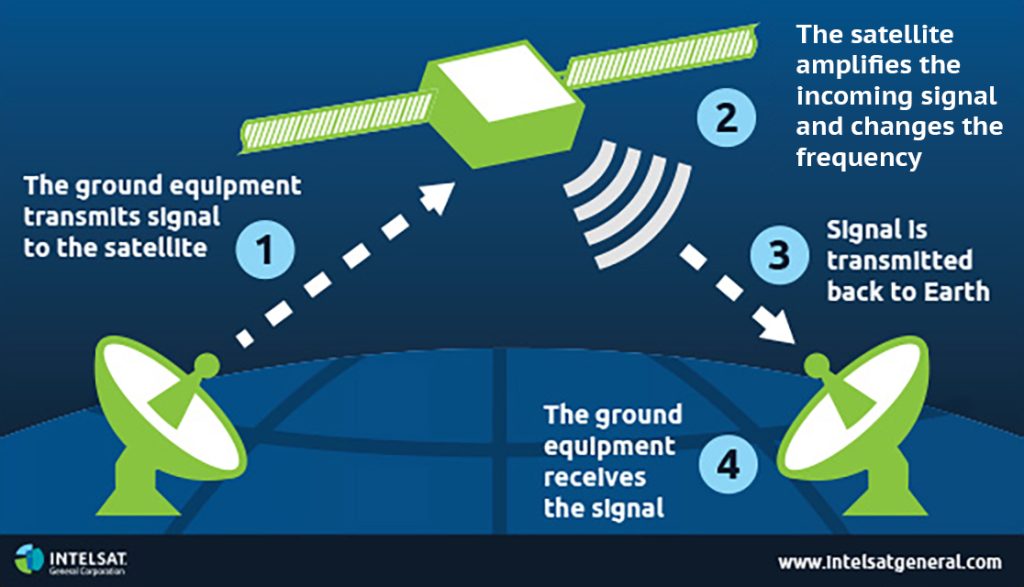Wireless communication is a complex and perplexing field, where errors can occur at any moment. To combat this, diversity techniques have emerged as an essential tool for enhancing signal quality and reducing transmission errors.

Diversity combining is one such technique that involves merging multiple copies of a single signal collected from different channels or antennas. This method has become increasingly popular due to its ability to improve the reliability and robustness of wireless networks.
Transmit diversity takes things up a notch by transmitting data through multiple antennas simultaneously, mitigating fading effects caused by multipath propagation. This leads to better channel performance, making it an excellent choice for wireless communication systems.
Beamforming is another commonly used technique in diversity combining that involves directing radio waves towards specific directions using antenna arrays. By doing so, beamforming helps reduce interference from other sources while increasing signal strength. The IEEE standards have been developed for both transmit diversity and beamforming techniques, making them widely accepted in commercial applications.
By utilizing diverse receive antenna elements or uncorrelated antenna elements, wireless communication systems can achieve maximum throughput while improving their robustness against various types of interference. These techniques combined lead to significant improvements in the overall performance and reliability of modern-day wireless networks – a true burst of innovation!
Combining Transmit and Receive Techniques for Improved Signal Quality
Contents
- 1 Combining Transmit and Receive Techniques for Improved Signal Quality
- 2 The Role of Antennas in Diversity Combining Techniques
- 3 Transmit Diversity and Beamforming for Better Channel Performance
- 4 Selection Combining and Ratio Combining: A Reference Guide
- 5 Achieving Maximum Throughput with Receiver Diversity Techniques
- 6 MIMO Spatial Multiplexing: Evaluating Bandwidth and Steerability
- 7 Improving Robustness of the Entire System with Uncorrelated Antenna Elements
In the realm of wireless communication, there exists a plethora of techniques that can be employed to enhance signal quality. By combining transmit and receive methods, it is possible to achieve optimal results. Transmit diversity utilizes multiple antennas to send identical information over separate channels, thus increasing the probability that at least one transmission will reach the receiver without being hampered by drawbacks such as fades or interference.

Antenna diversity presents another approach: multiple receive antennas are utilized to capture distinct versions of the same signal which can then be combined for superior reception quality. Yet, beamforming is yet another technique used in conjunction with transmit and receive techniques for improved performance within a channel.
This method involves directing signals towards specific locations via antenna arrays, decreasing interference from other sources while amplifying signal strength where desired. Optimization based on channel conditions allows significant enhancement of wireless communication potential through beamforming strategies.
Additionally, selection combining and ratio combining have been proven effective when utilizing receiver diversity techniques to achieve maximum throughput. Selection combining entails selecting the most optimal available signal from several receiving antennas; whereas ratio combining combines these signals into an output with heightened quality.
These approaches prove particularly valuable when dealing with obstacles like fading or multipath propagation effects that impair reliability and robustness within wireless transmissions.
The Role of Antennas in Diversity Combining Techniques
Antennas are perplexing devices that wield a mighty burst of power in the world of wireless communication. Their role is crucial when it comes to diversity combining techniques, which seek to improve signal quality by utilizing multiple antennas at either end of transmission. The redundancy provided through the use of these antennae helps mitigate channel impairments and fading, but how does this all work?
Transmit diversity is one such technique that will leave even seasoned experts scratching their heads. By transmitting the same data on multiple antennas with different phases or polarizations, reliability increases as information loss due to fading or interference decreases. But wait! There’s more! Beamforming is another transmit diversity technique that combines signals from multiple antennas into a directional beam aimed directly at the receiver. This results in increased gain and reduced interference for better overall performance.
But wait, there’s still more! At the receiving end, various diversity combining techniques can be used to combine signals from different antennas for improved performance. Selection combining chooses only one antenna with maximum signal strength while ratio combining combines signals from all available antennas using specific weights based on their SNRs (signal-to-noise ratios). Equal gain combining assigns equal weightage to each antenna’s output whereas maximum ratio combining utilizes SNR-based weighting factors for optimal combination.
In conclusion, diverse antenna configurations are essential components of any wireless communication system aiming for high-performance transmission under challenging channel conditions. Transmitting and receiving ends utilize various perplexing methods such as transmit diversity and selection/ratio/equal-gain/max-ratio-combining along with beamforming methods combined with these antennae configurations help achieve better signal quality through increased gains and reduced interferences during radio transmissions – leaving us both bewildered yet astounded at just how amazing technology can be!
Transmit Diversity and Beamforming for Better Channel Performance
The intricacies of wireless communication channels can be confounding, but with the right techniques, we can improve performance. Transmit diversity, for instance, involves using multiple antennas at the transmitter to send the same signal with varying phases or time delays. This technique increases the likelihood of a robust signal being received by recipients as it amalgamates signals from several transmit antennas.
Yet another method that elevates wireless communication is beamforming. By employing an array of antenna elements, this technique concentrates energy in a specific direction through adjustments in phase and amplitude settings for each antenna element. When these two methods are combined, we witness improved channel performance that reduces interference while further boosting gain.
Antennas play an indispensable role in implementing these techniques–the receive antenna needs to effectively capture all incoming signals while minimizing noise and interference; likewise, the transmit antenna must be designed such that radiated power is maximized while losses due to reflections or absorption are minimized by surrounding objects. Optimal performance when utilizing both transmit diversity and beamforming together thus depends on careful selection and placement of both types of antennas so as to achieve superior signal quality in wireless communication systems.
Selection Combining and Ratio Combining: A Reference Guide
Wireless communication systems are constantly seeking ways to enhance signal quality, and two techniques that have emerged in recent times are selection combining and ratio combining. These methods employ diversity measures like multiple antennas at both the transmitter and receiver ends to improve reception in fading environments.
Selection combining involves cherry-picking the best branch from a set of antennas based on received power levels. Conversely, ratio combining combines all branches by taking their weighted sum into account while factoring in noise and phase differences between them. This feature makes it more effective than selection combining as it can achieve better system performance even under low-SNR conditions where fade effects take a back seat to noise.
Antenna diversity plays an essential role here since using multiple antennas helps create independent fading paths that ultimately lead to improved signal quality. So, whether you’re looking for the best possible wireless connection or trying to optimize your existing setup, implementing these techniques could be just what you need!
Achieving Maximum Throughput with Receiver Diversity Techniques
In wireless communication systems, multipath fading can be a major obstacle to achieving reliable signal quality. That’s where receiver diversity techniques come in – using multiple antennas at the receiving end can help increase throughput and reduce errors caused by fading channels. But which technique is best? Equal gain combining (EGC) is simple and effective, but doesn’t take into account the strength or direction of incoming signals. Maximal ratio combining (MRC), on the other hand, uses weights proportional to signal strength and considers their orthogonal nature for improved performance – but requires more complex processing.
Beamforming is another approach that adjusts antenna phase and amplitude to direct radio signals toward a specific location or base station. It comes in both transmit beamforming (TxBF) and receive beamforming (RxBF) modes according to IEEE 802.11n standards, allowing for improved throughput across different frequencies and directions.
Ultimately, choosing between EGC, MRC or beamforming depends on various factors such as channel conditions, available antennas at both ends of transmission lines as well as cost considerations etc., but all these methods have been proven successful when implemented correctly with proper calibration procedures followed during installation phases ensuring optimal performance levels achieved throughout operation periods without degradation over time due environmental changes affecting system parameters like temperature fluctuations causing misalignment issues leading decreased efficiency levels within networks requiring maintenance efforts being taken regularly prevent downtime occurrences occurring frequently impacting user experience negatively ultimately resulting loss revenue opportunities businesses relying heavily upon network infrastructure supporting day-to-day operations effectively efficiently meeting customer demands expectations timely manner.\n
MIMO Spatial Multiplexing: Evaluating Bandwidth and Steerability
MIMO spatial multiplexing is a formidable technique in the realm of telecommunications, granting access to multiple parallel transmissions and receptions. With its four receive antennas, this approach can evaluate signals with tremendous strength, which can then be harnessed to direct transmissions towards users boasting the finest channel quality. The outcome? A decrease in interference and an increase in bandwidth.
But how does MIMO spatial multiplexing achieve such remarkable feats? It all comes down to evaluating both steerability and bandwidth. To make this happen, we must predefine bit magnitude levels for each analog-to-digital converter (ADC) output. This process guarantees that ADC outputs are uniformly magnified across different frequencies, rendering them comparable.
Of course, SIMO systems also play a crucial role in making MIMO spatial multiplexing work seamlessly. By providing diversity reception capabilities, these single-input multiple-output systems bolster system robustness under fading conditions or other forms of interference. Ultimately combining SIMO with MIMO leads to substantial improvements not only throughput but also reliability within wireless communication systems!
It has been demonstrated that incorporating uncorrelated antenna elements can fortify the resilience of wireless communication systems. When numerous antennas are utilized, they may be arranged in a manner that enables them to function independently, mitigating the effects of multipath and diminishing signal fading. This enhancement is particularly paramount when transmitting high voltage signals or in locations with suboptimal reception.
By utilizing four streams instead of two, it is conceivable to attain even more substantial improvement in system performance. With an increased number of receiver antennas at hand, each one can detect the received signal independently and integrate them for an overall superior gauge of the transmitted signal. Furthermore, this technique also alleviates degradation resulting from interference emanating from other devices operating on similar frequencies.
One primary benefit supplied by uncorrelated antenna elements is their capacity to provide diversity gain sans necessitating additional power consumption or intricate algorithms. Merely augmenting more antennas and allowing them to receive signals autonomously results in less fading and enhanced error rate performance. To recapitulate, utilizing uncorrelated antenna elements as a benchmark for enhancing system performance engenders wireless communication networks that are more resilient and dependable even amidst arduous circumstances.


